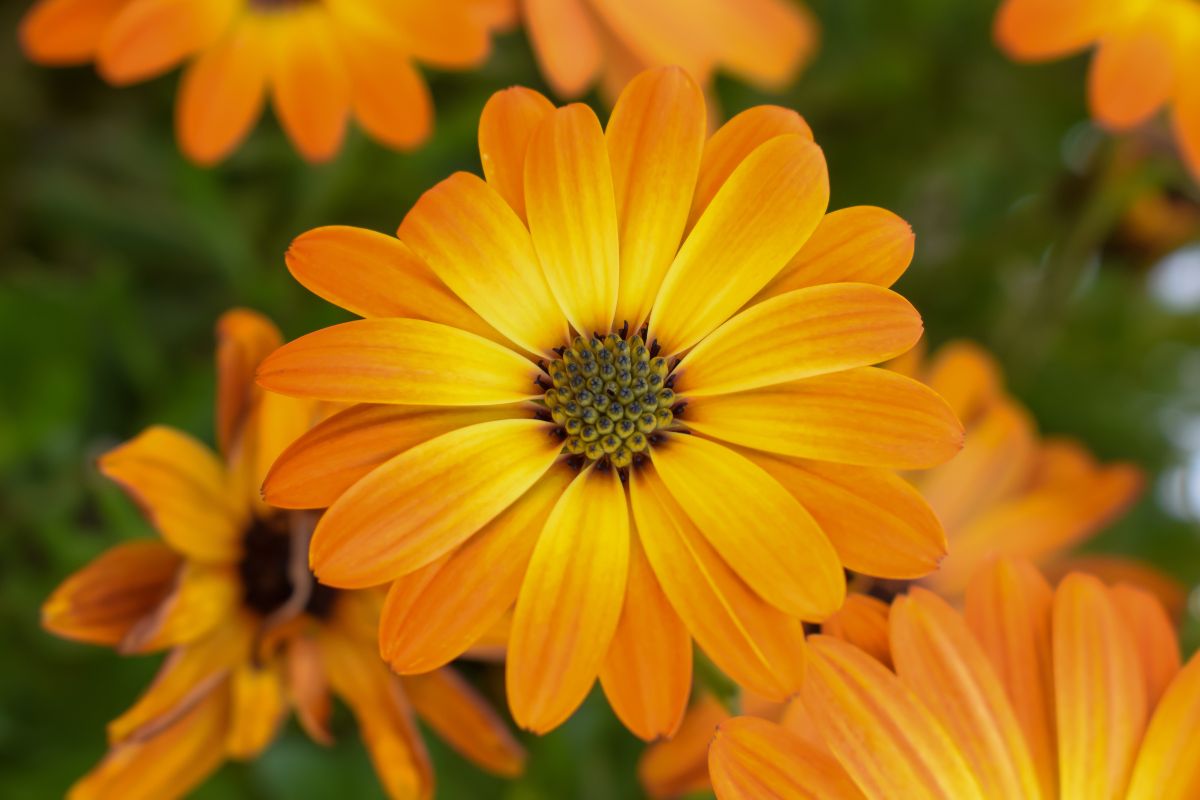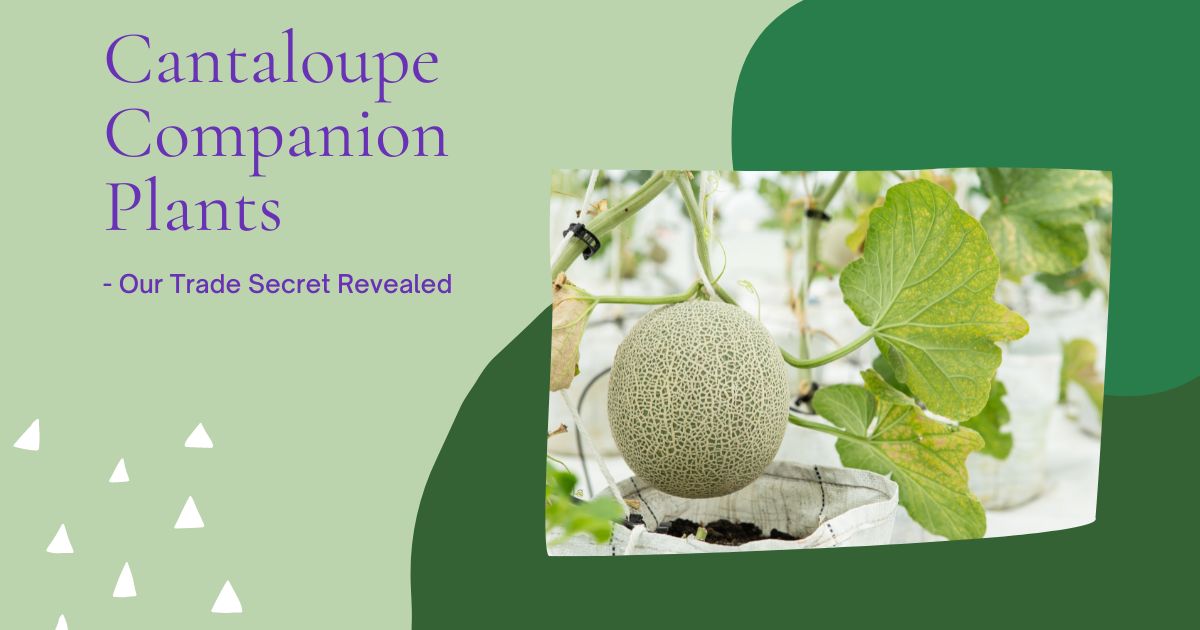What are Companion Plants?
Did you know that there are plants out there that help cantaloupes grow called companion plants? If not, you’re lucky because we’re here to tell you about cantaloupe companion plants.
Below is a full guide listing the best companion plants for cantaloupe plants and other plants to keep away from them. We have also given you the pro tips for how to take care of cantaloupe plants.
Cantaloupe Companion Plants
The most important question you must answer when growing muskmelons is what can you plant with cantaloupe plants?
Knowing what you can plant with cantaloupe plants is critical to ensure the melons grow successfully. Here is the complete list of the best companion plants for cantaloupes.
Alliums
The first companion plant for cantaloupe plants on our list is a group of plants. Plants from the allium family are some of the best companion plants in any garden.
Alliums like garlic, chives, and onions have been the go-to companion plant for all types of fruits and some veggies. They have a naturally strong aroma that deters all sorts of pests, big and small.
You should strongly consider alliums as one of your first choices to be a companion plant for your cantaloupes.
Basil
Herb plants are great companion plants for all types of fruits and vegetables. Basil would be a wise choice to plant next to your cantaloupe. Mainly because basil deters whiteflies, which are notorious for ruining cantaloupes
Bee Balm
A bee balm is a wonderful flower that is a wonderful addition to any garden. They’re attractors of pollinating insects and predators that love feasting on cantaloupes and other fruit plants.
Borage
Borage is a flower that grows well with a wide variety of plants. Like bee balm, they are pollinators’ favorite and deter worms from borrowing in your melons.
Bush Beans
Bush beans are leafy plants that pair well with cantaloupes and other melons. What makes bush beans so beneficial is their ability to take nitrogen from the air and bring it into the soil. Your cantaloupes will grow well with some bush bean plants growing near them.
Calendula
Calendula is another pollinator attractor you can plant near a wide range of plants, not just cantaloupes. What makes them good to pair with cantaloupes is that they both thrive in the same cool temperature.

Catnip
Catnip is an herb that deters many insects that won’t block the sun from reaching your melons. Remember that the herb may also attract a few cats near your garden.
Chamomile
Chamomile has historically grown alongside leafy vegetables like broccoli and kale, but they can benefit your cantaloupe plants. This herb has anti-bacterial and fungal properties while improving the taste of its neighboring plants.
Worth considering if you want cantaloupes that taste good and are bacteria-free.
Cilantro
Cilantro is an herb beneficial to just about any plant; you put them next. Along with attracting pollinators, they also deter many pests, such as various flies and beetles. All while adding nutrients to the soil to help all your plants grow stronger and healthier.

Collard Greens
Leafy plants like collard greens are great to place around your cantaloupe plants. Their wide leaves act as a trap for pests like aphids that love fruits like melons. You could even plant collard greens in the same row as your cantaloupes, and they’ll benefit.
Dill
Dill is a resilient herb that can grow in various climates. It is strong and can benefit just about any plant you put next to it. It deters numerous pests and adds flavor to neighboring plants with its citrus aroma.
Lettuce
Lettuce is a common vegetable that gardeners often mix in with their cantaloupe plants. They act as a defense for the cantaloupes against weeds and insects with their wide leaves.
You also don’t have to worry about lettuce taking up the space of your cantaloupe plants. These leafy veggies grow fast, so they’ll be gone when your cantaloupes need to stretch their vines out.
Marigolds
Marigolds have a pungent aroma that pests like aphids, beetles, and flies tend to avoid. They’re good to put next to fruit, but don’t let them share the same soil or put them too close together.
Melon plants will often adopt some of the flavor notes of their neighboring plant. You don’t want to bite into a cantaloupe that tastes like a marigold.
Marjoram
Marjoram is a common border plant that gardeners use to protect their other fruits and vegetables. This herb has a repelling scent that pests hate while benefiting neighboring plants by improving the soil with nutrients.
Mint
Many growers will tend to try to avoid planting mint since the herb tends to proliferate and is invasive. But on the other hand, mint is good for attracting pollinating insects and repelling pests. The herb will also give your garden a nice smell while you’re working.
Nasturtiums
Nasturtiums are one of the better companion plants for cantaloupes and all other types of melons. This flower will deter various pests from flies and beetles from eating your fruit plants. They will also keep the soil moist, benefiting any neighboring plants around them.
Oregano
You can put oregano next to just about any fruit or vegetable, and those plants will benefit from the herb. Oregano deters all sorts of insects from eating your other plants while helping them grow. This herb is also durable, grows fast, and is great to add to various meals.
Radishes
Radishes are root vegetables you can either put on the border or between your cantaloupes. They’re good for taking up space and blocking aphids and ladybugs from eating on your melons. Also, since radishes are root vegetables, it won’t affect them if bugs eat their leaves.
Sage
Sage is one of the best herbs you can use as a companion plant in your garden. It’s an herb that can benefit any other plant in various ways.
They can repel pests, attract pollinators, add nutrients to the soil, provide soil, and help other plants grow faster. All great benefits make sage one of the pound-for-pound best companion plants.

Savory
Savory is one of the best plants for companion planting for cantaloupe plants. It’s an herb that can benefit your fruit and melon plants by making them sweeter by being near them. Sweeter cantaloupes are always the goal when trying to grow this melon.
Tansy
Tansy is a flower that you can put next to almost any plant, and they will benefit from tansy’s presence. Even potatoes can benefit from being companion plants with this flower.
Cantaloupes can benefit from tansy being its neighbor due to the flower repelling pests and attracting pollinating insects. They’re also brightly colored and give some life to your garden.
Tarragon
Tarragon can thrive just about anywhere and especially in dry conditions. Since the herb has natural best repellent properties and doesn’t require much water, they’re a favorite for many gardeners—a nice neighbor for cantaloupes, who are notoriously heavy feeders.

Wildflowers
With abundant wildflowers in your yard, cantaloupes will grow great around them. Whatever wildflowers you have around your house will help attract pollinators to your cantaloupe plants.
Plants Not to Plant with Cantaloupes
On the other side of the spectrum, there are many plants that you should never plant near cantaloupes. Here is what to grow alongside your cantaloupe plants.
Cucumber
Cucumbers are one of the worst veggies you can put near muskmelons for several reasons. They attract numerous pests like cucumber beetles that also love eating melons.
Both plants are heavy feeders that take up a lot of space. Your cucumber and cantaloupe plants will suffocate the other and probably won’t produce anything.
Brassicas
Anything from the brassica family, like broccoli, cabbage, cauliflower, or kale, should never be next to your cantaloupes. They are all heavy feeders that won’t get the proper nutrients being next to one another.
Potatoes
Potatoes are one type of vegetable that can only be around a handful of other plants. Cantaloupes are not one of those plants.
Not only do potatoes attract a wide variety of pests, but they absorb most of the nutrients from the soil. Don’t ever put cantaloupes in the same vicinity as potatoes.

Pumpkin
Pumpkins are heavy-feeding and space-consuming plants, just like cantaloupes. Each plant requires a lot of attention and space, so you’ll have to keep them separate to grow efficiently.
Squash
Squash should also never be put anywhere near a cantaloupe plant. Both plants have long vines that take up a lot of space and absorb most of the nutrients around them.
Watermelons
Watermelons are another type of melon, which means they need their space to feed and grow. It’s a good practice never to place two types of melons next to each other.
The Benefits of Companion Planting
By reading the descriptions of the best companion plants for cantaloupes, you can see some of the benefits. Companion planting should always be pre-planned before planting season begins.
The benefits of companion planting include:
- Repelling pests
- Blocks weeds from taking hold
- Attract pollinating insects
- Add nutrients to the soil
- Each plant grows stronger
The Ideal Growing Conditions of Muskmelons
For your muskmelons or cantaloupes to thrive, their growing conditions must be pristine. Here are some tips on growing cantaloupe.
The Best Growing Conditions
The growing season for cantaloupes is right around the time spring starts, but it’s still a little chilly. Cantaloupe plants need sunny weather with a cool temperature between 65 and 75 degrees Fahrenheit(18.3 to 23.9 Celsius).
How Much Space Will They Need?
Like all melon plants, a cantaloupe plant will need a large amount of space to grow. These melon plants have vines that extend outward and take up a lot of space.
Watering and Feeding
How often do you water your cantaloupe is a common question about this melon plant. You will want to water them between 1 to 2 in (2.54 to 5.08 cm) to give them proper hydration.
You can also add an organic mulch in the early stages of growth. But try to avoid using growth enhancers with chemical agents that could affect your health.
Conclusion
Cantaloupes grow best when they have a good companion plant next to them. The cantaloupe companion plants in the section above will help your melons be pest free and grow faster.
Think about where you place your melon and companion plants to have a successful growing season.
